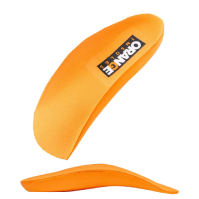If you're experiencing low back pain, there's a good chance it's caused by your sacroiliac (the sacrum) to both hip bones and can cause pain when it moves more than it should or moves improperly.
The SI joint should have a very limited range of motion. Its job is to absorb pressure transmitted between the upper and lower body and to stabilize the pelvis when walking, bending, and twisting. When this joint moves too much, too little, or improperly, it can become inflamed and irritate the portion of the sciatic nerve that runs in front of the joint and cause pain in the lower back and legs.
Symptoms
While pain caused by the SI joint should be diagnosed by a doctor or medical professional, symptoms can include:
- Pain, numbness, tingling, weakness in the lower extremities
- Pelvis/buttock pain
- Hip/groin pain
- Instability of the legs
- Trouble sleeping due to pain
- Trouble sitting (unable to sit for long periods, sitting on one side) due to pain
- Pain going from sitting to standing
If you're experiencing these symptoms, your SI joint could be the cause.
Read more: Pain from Aging?
Treatment
Once you've been diagnosed with SI joint pain, you can try to treat it on your own using the following methods.
Rest
Try taking a couple of days off from physical activity. Don't rest too long, though, as this can cause stiffness, pain, and weakness.
Ice or Heat
Ice can reduce inflammations and alleviate pain while heat can reduce muscle tension or spasms.
Stretching and Exercise
Certain stretches and exercises can help alleviate pain by strengthening and stabilizing the SI Joint.
Some stretches that can help restore normal movement and alleviate the irritation of the sciatic nerve are:
Single knee-to-chest stretch:
Lie flat on your back with your legs straight. Bend one knee and pull it to the chest. Hold it there with both hands for 5 to 10 seconds. Repeat on each side 5-10 times.
Lumbar Rotation:
Lie on your back with both knees bent and the feet flat on the floor. Pull both knees to one side, keeping the thighs together and your lower back and shoulders on the floor. Your knees probably won't go very far. Hold for 5 to 10 seconds, then switch to the other side.
Asymmetric Stretches:
These stretches, where you push one way while adding a counterweight, are also extremely helpful when looking for SI joint relief.
Lifestyle
Stay Active
To prevent irritating your SI joint, it's important to make sure you are moving often. Sitting too long can cause this kind of pain so if you sit at a desk all day, make sure to get up and move as often as possible, ideally every 30 minutes or so. Also, when you are sitting, make sure you're using the proper posture.
Read more: The Foot of the Matter: Muscle Mass, Aging, and Your Feet
Stay Aligned
When your joints are not aligned, or when certain muscles are overcompensating for others, you will experience pain. To keep your SI joint functioning the way it should, be sure to stay aligned by stretching often, moving regularly, walking and running properly, and using the right insoles in your shoes if you're on your feet all day.
SHOP for INSOLES




























































